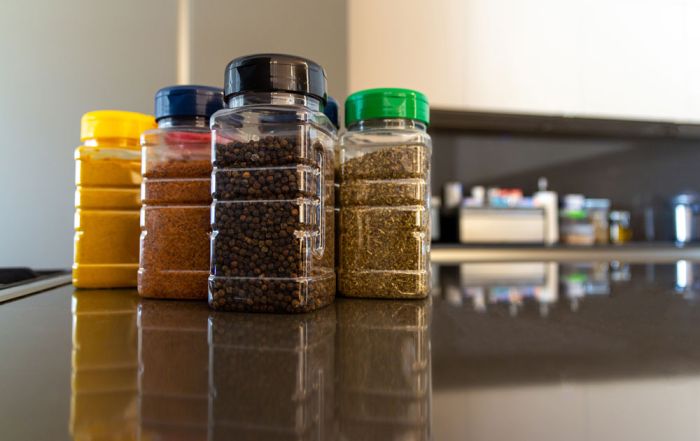Ready-to-Eat Foods: Are they Risky?
Those of us familiar with the retail food industry are well aware of potential risks associated with ready-to-eat foods. We recognize that any food can present risks if it is not handled correctly. Yet, our circles of family and friends outside the world of foodservice may not have this awareness. Sure, most folks know that meat, poultry, and dairy foods should be kept in the refrigerator. Yes, they know the importance of cooking meats (but you may get differences of opinion on what “done” means; quiz wait staff what temperature ‘medium well’ is and you might get some surprising answers!). What seems to go over the head of many consumers (and even some TV chefs) is the importance of handling ready-to-eat foods – or RTE – in a way that keeps the food safe.
In our blogs this month, we are going to review potential risks associated with RTE foods and identify action steps that can be taken by foodservice workers, and the folks at home, to minimize or prevent illness.
I did a quick google search of ready-to-eat foods and surprisingly, the “first responders” awards went to ads promoting convenience foods. Yes, RTE do provide convenience because, as the name implies, ready-to-eat foods are those that are eaten without cooking. Food handlers working with ready-to-eat foods should take extra precautions because there is not a kill step of cooking with these foods to lower bacterial cell counts, which lowers the risk of someone becoming sick. What’s done to it is done. Items that require cooking before eating, whether it is a frozen meal or an ingredient such as flour used in baking, are not RTE foods, because some additional preparation steps are needed. It used to be ok to “sample” raw cookie dough, but we know now that that is a risk! (Darn!)
Some examples of ready-to-eat foods are washed and bagged salad greens, deli meats and cheeses, and packaged foods. Most food manufactures have food safety plans based on HACCP principles. HACCP stands for hazard analysis critical control points. This was the risk prevention approach taken with NASA missions to avoid astronauts getting foodborne illnesses in space and is now used in most food processing facilities. It is a common sense approach that first identifies what might go wrong based on the food characteristics, handling requirements, and facilities (the hazard analysis); and addresses action steps to take throughout the product development to reduce those risks (that is the control points part of the name).
If foods are purchased from a reputable vendor, foodservices should be confident that the food is safe when it arrives at their dock door. We do know, however, that some ready-to-eat foods are contaminated. That is why there are foodborne illnesses associated with these products and why we see numerous recalls. Think of lettuce recalls, for example.
We are going to focus on risks that can be controlled in our foodservice operations. First that comes to mind is temperature abuse, followed by intentional or unintentional contamination from poor handling practices, or contact with unclean surfaces. Recent versions of Food Code have included washed and chopped lettuce greens as a temperature controlled for safety food item, so most foodservice operators know that some packaged RTE foods require temperature controls – think washed and bagged salad greens. Keep in mind that the FDA identifies 44 types of greens – it is more than lettuce! But not all RTE foods require temperature controls – it depends on characteristics of the food item. Remember FATTOM and you will be fine!
However, even if the food characteristics allow for food to be kept at room temperature, the risks of intentional or unintentional contamination are there. You might be asking – what risk does a hamburger bun present? By itself, not much. But, if a staff member who unknowingly has hepatitis A handles the bun directly with their hands, then there is a risk that the virus has been transferred to the bun.
Some foodservices create their own RTE foods by processing in-house. Examples might be fresh cut salads made by staff from bulk purchases of unprocessed produce. It surprises me that there is a mindset by many that produce with skins doesn’t need to be washed before peeling (in fact, my own sisters had that idea!). What isn’t realized, is that the knife or peeler becomes the vehicle for transmitting pathogens from the outside to the edible portion. Other questions that should be asked are: Where have the packaging materials been stored? What is the cleanliness of the cutting equipment?
We have also seen foodservice staff who for the most part very attentive to good handling practices place a case or a box of a food item directly on the food prep counter. Cross-contamination in action! One of the USDA projects we were involved with at Iowa State was on this very topic – see www.iowafoodsafety.org for the YUCK photos that illustrate cross-contamination.
Purchasing RTE foods reduces some of the risk by minimizing in-house handling, but it doesn’t eliminate potential for contamination. In the next blog we will dive deeper into the pool of RTE foods and identify strategies that can be used by foodservices to reduce risk.
As we say, Risk Nothing!
READ MORE POSTS
Cross Contamination and the Surfaces that go Unnoticed
In October, I ran across a new research study published in the Journal of Food Protection in early-September. The article explored cross contamination in consumer kitchens during meal preparation. One of the authors was a previous SafeBites presenter, Dr. Ellen Shumaker, at North Carolina State University. Although the setting was consumer kitchens and not the commercial kitchen many of you deal with daily, the findings were very applicable to what we often see in the foodservice setting.
Emergency Preparedness: The Not-so Calm After the Storm
If you and your foodservice operation have been hit by an emergency or other disaster, what comes next and how do you move forward? Much of the answer to this is predicated on the actual disaster that you are dealing with – a flood is certainly a much different than a fire, but some of the food safety considerations remain the same if your business has been left intact and has not been damaged by the disaster.
Emergency Preparedness and Responding to a Disaster with Food Safety in Mind
As I write the first blog this month, the realities of the devastation in Florida are coming to light as we also deal with the aftermath of Hurricane Fiona, which impacted Puerto Rico late in September. Recent news has been focused on the recovery efforts for all who have been impacted. Thus, I thought it would be fitting this month to discuss emergency disaster planning resources in our first blog and delve into recovering from a disaster in our second blog later this month.
During National Food Safety Education Month is it time for Your Food Safety Refresher?
You see them in every restaurant and commercial foodservice operation across the United States. Framed and proudly displayed, often by the kitchen, the cashier, the kitchen entrance, or the service counter - just as they should be. To what am I referring? The food safety certification certificates, of course!










